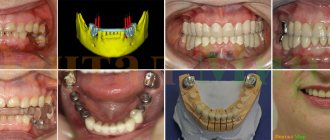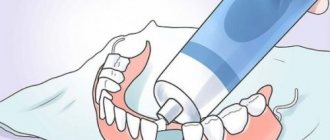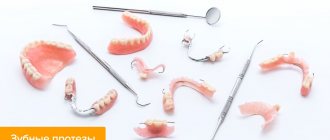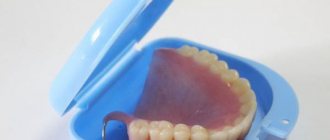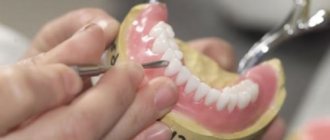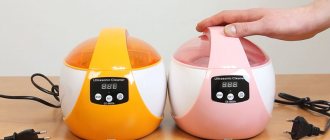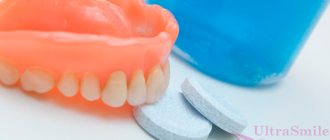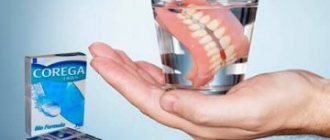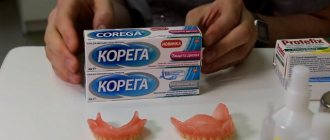Alloys in orthopedic dentistry
Metal occupies a central place among materials in dentistry. Most fixed dentures and removable denture frames are cast (or stamped) from dental alloys. Alloys in dentistry are used as auxiliary materials for soldering and stamping. Dental instruments are made from them.
Article outline:
- Classification of metals and alloys in dentistry
- Structural metal alloys in orthopedic dentistry
- Noble metal alloys in dentistry
- Base alloys in orthopedic dentistry
- Auxiliary metal alloys in dentistry
Metals and alloys in dentistry Classification
All metals and alloys are divided into ferrous and non-ferrous.
Ferrous metals are iron and alloys based on it. Steel and cast iron. Cast iron contains more than 2.14% carbon. Not used in dentistry.
The surface of cast iron is matte and non-shiny. It is difficult to polish.
Steel in dentistry
an iron-based alloy containing less than 2.14% carbon. In addition to iron and carbon, steel also contains other metals. They give the alloy new properties (alloy steel), including making it stainless.
Steel copings for stamping crowns
Alloy steel is an alloy of iron and carbon, with the addition of any other metals. They change the properties of the alloy (melting point, hardness, ductility, malleability, etc.).
Alloy steel
Stainless steel is corrosion resistant steel. Chromium (21%), as well as other metals, are most often used as an anti-corrosion agent.
Non-ferrous metals are, respectively, all other metals.
Metals in orthopedic dentistry are divided into noble and non-noble.
Noble metals (or precious metals) are metals that are resistant to corrosion and chemically inert. The main noble metals are gold, silver, and platinum group metals (platinum, palladium, iridium, osmium, etc.).
Base metals are metals that corrode easily and are not found in nature in their pure form. They are always mined from ores.
Depending on density
metals used in dentistry are light and heavy.
There is no single point of view on this issue. The most general criterion is that the density of the metal is greater than the density of iron (8 g/cm³) or the atomic weight is greater than 50 amu. If at least one condition is met, the metal is heavy.
For ecology and medicine, heavy metals are metals that are highly toxic and environmentally significant. Which creates even more confusion. For example, gold with a density of 19.32 g/cm³ and an atomic weight of 197 amu. is not classified as a heavy metal due to its inertness and excellent biocompatibility.
Precious metal alloys and molded titanium bases Parunov V.A., Lebedenko I.Yu., Stepanova G.S., Vasekin V.V. MGMSU, FSUE NPK "Supermetal", Moscow
1. Alloys based on noble metals Recent trends in the development of dental materials science are closely related to both the development of science and the urgent needs of dentistry. The deterioration of the global environmental situation, demographic changes with an increase in the proportion of older age groups of the population, changes in the nature of nutrition, and increased aesthetic requirements determine the important role and rapid development of research in orthopedic dentistry, and necessitate the emergence of a variety of new materials used in dental practice. The use of traditional base alloys based on cobalt, nickel and chromium for prosthetic dentistry is likely to be gradually reduced due to the possibility of adverse reactions in some patients sensitive to the effects of base metals. Therefore, the second half of the last century is characterized by a rapid growth in the number of materials based on precious metals in dentistry. The world's leading companies have developed and offered to the dental materials market a wide range of alloys based on gold, platinum and palladium, which satisfy almost the entire range of requirements of modern prosthetic dentistry. And the pace of research and development of new alloys based on precious metals is not slowing down by the end of the century, but in some areas is increasing sharply. Alloys for the frames of metal-ceramic and metal-composite prostheses are especially widely developed and introduced into dental practice. In the mid-80s, with the appearance on the Russian market of imported high-performance dental alloys of noble metals of various compositions and purposes, Russian dentists could not oppose them with any competitive domestic materials, the range of which at that time was extremely limited, and their consumer properties did not meet modern ones standards. In general, the level of domestic dental structures made of precious metal alloys until the 90s can be assessed as follows: – domestic gold alloy of 900 grade due to poor wear resistance could not be used for the manufacture of heavily loaded dentures; – 750 grade alloy is not widely used; – silver-palladium alloys for stamped parts of dentures did not provide the necessary biocompatibility with oral tissues; – the formulation of cadmium-containing gold solder predetermined the harmful effects of cadmium on the human body. Considering this serious lag in domestic dental materials science in the field of alloys, in the mid-90s, measures were taken to create new dental materials and structures based on noble metals and titanium, not inferior to the best world standards. FSUE NPK Supermetal, together with the Moscow State University of Medicine and Dentistry, was the first in Russia to propose new high-performance alloys based on gold, platinum and palladium that can be widely used in orthopedic dentistry. The ideology of creating new alloys based on noble metals is based on the principles of the maximum possible combination of high technological characteristics of alloys with their excellent functional properties. The created alloys have a high content of noble metals (the sum of gold and platinum group metals is 70–98%) and do not contain alloying elements (Cd, Ni, Be). capable of causing harmful allergic or toxic effects on the human body and are highly corrosive and biologically inert. The alloys meet the highest requirements of the world practice of dental prosthetics and, in terms of their medical and technical data, comply with ISO standards.
The former name of this alloy (Super-TZ) includes the concept of “heat-strengthened gold.” This is a thermally hardenable wear-resistant alloy that is used for stamped and cast dental structures (crowns, bridges with and without polymer coatings). The alloy contains 75% gold, has a beautiful yellow color and corresponds to group III alloys according to the international standard ISO 1562-84. The melting range of the alloy is 880–950 °C, hardness in the cast state is 1,375, after heat treatment – 2,000–2,200 N/mm2, density 15.5 g/cm3, yield strength 250 N/mm2, relative elongation 20–25%. Analysis of clinical trials and ten years of practice in the use of GOLHADENT alloy confirms its high technological and functional qualities. FSUE NPK "Supermetal" mass-produces the GOLHADENT alloy in the form of granules, disks and wire. GOLHADENT has also found its application in the manufacture of acupuncture needles and “STYLDENT” dental jewelry, which is fashionable among young people. If there are alloys, then there must be solders. Gold-containing cadmium-free solder 750 standard – BECADENT (formerly “Superbecam”) is also our new development. Everyone knows from materials science textbooks that most traditional gold dental solders contain cadmium, which lowers the melting point of the solder, preventing melting of the parts being joined. The results of numerous studies confirm that cadmium is a serious environmental pollutant and has adverse effects on the human body. One of the main features of cadmium metabolism is its rare ability to accumulate in the body (half-life 40 years). This leads to the need to exclude cadmium from the composition of dental alloys. In the European Union countries, cadmium-containing solders have been banned for a long time. The main characteristics of our solder are no worse than those of traditional cadmium-containing gold solders: golden yellow color, melting point below 800 ° C, adhesive joint strength, corrosion resistance, fluidity, wettability are at the level of the properties of gold solder AuAgCdCu 750–30. Available in the form of wire and plates.
| Rice. 4. Clasp dentures with KEMADENT coating |
We present the KEMADENT material (formerly Super-KEMZ) for wear-resistant gold coating (Fig. 4). Despite the active expansion of materials based on noble metals in dental practice, modern prosthetic dentistry still widely uses non-precious metal materials due to their lower prices. Dentures or their parts made of non-precious alloys in many cases require additional processing in order to increase their corrosion resistance or improve aesthetic qualities. Most often, thin metal coatings based on noble metals are applied to such structures by galvanic means. The main requirement for these coated structures is high wear resistance. Thus, the creation of the KEMADENT gold coating was timely and theoretically justified. KEMADENT coating is intended for electrochemical coating of dentures made of base metals. The maximum hardening effect is achieved by increasing the concentration of non-metallic particles. The coating is based on gold (98.5%) containing up to 0.5% zirconium oxide ZrO2. In addition to the materials listed above, intensive work is currently underway on new alloys. A gold-based alloy for clasp dentures and a high-temperature alloy - solder for noble alloys for metal ceramics - are ready and undergoing clinical trials. 2. Titanium bases obtained by superplastic molding All practicing dentists are familiar with removable plate dentures and the acrylic plastic from which they are made. For almost 70 years, acrylic plastics have been the main base materials for the manufacture of removable dentures, and all the disadvantages of acrylic plastic have been well studied. This is the fragility of plastic dentures and frequent breakdowns, which have become commonplace in dental clinics. These are the so-called phenomena of “intolerance”, which include denture stomatitis caused by: – poor processing of dentures; – disruption of the polymerization process; – increased colonization by microorganisms as a result of poor hygiene. The low thermal conductivity of acrylic plastics leads to disturbances in thermoregulation of the oral cavity. All of the above problems gave rise to the emergence of removable dentures with metal bases. Everyone knows metal bases made of cobalt-chrome alloy. However, they are quite notorious for their severity and difficulty in adapting to them. Titanium bases can be an effective alternative. In general, titanium is a metal of great future in dentistry, because it is biologically safe, has resistance to corrosion, has excellent mechanical properties and excellent biocompatibility, so it is not surprising that new technologies go hand in hand with this metal. Dentures made from titanium alloys can be made in several ways. One of them is milling. Thus, CAD/CAM systems for computer-aided milling have been developed abroad and are currently being widely implemented. Along with milling technology, plasma spraying and powder metallurgy are being further developed. In dentistry, titanium powder metallurgy is used mainly for the manufacture of removable laminar dentures. A mixture of titanium powder of various dispersion, distilled water and a binder component is packaged like acrylic plastic. Then it’s all sintered in a vacuum at 1,000 °C for an hour. Plasma spraying is the application of coatings from powder or wire blanks to a substrate, while the sprayed material is fed into a high-temperature plasma jet, melts in it, accelerates and, hitting the substrate, firmly adheres to it. For this purpose, a special device is used - a plasmatron. For 15 years, titanium denture casting has been promoted in Japan, the USA and Germany, and more recently in Russia. Various types of equipment have been developed for centrifugal or vacuum casting, X-ray quality control of castings, and special refractory materials. The methods listed above are very technologically complex and expensive. A way out of this situation may be superplastic molding. What is “superplasticity”? The bottom line is that at a certain temperature, a metal with an ultra-fine grain behaves like a heated resin, that is, it can elongate by hundreds and thousands of percent under the influence of very small loads, which makes it possible to produce thin-walled parts of complex shapes from a sheet of titanium alloy. This phenomenon and the process consists in the fact that a superplastic sheet blank is pressed against a matrix and under the influence of a small gas pressure (maximum 7–8 atm) it is superplastically deformed, taking on a very precise shape of the matrix cavity in one operation. A denture made by superplastic molding has significant advantages: lightness compared to dentures made from cobalt-chrome or nickel-chrome alloys, and high corrosion resistance and strength. The sufficient simplicity of manufacturing the prosthesis makes it indispensable for mass production in orthopedic dentistry. The initial clinical stages of manufacturing a complete removable denture with a titanium base do not differ from traditional ones in the manufacture of plastic dentures. This includes a clinical examination of patients, obtaining anatomical casts, making an individual tray, obtaining a functional cast, and making a working high-strength model from superplaster. A model made of supergypsum with an alveolar ridge pre-insulated with clasp wax is duplicated into a fire-resistant mass. Fireproof models are placed in a metal holder made of a heat-resistant alloy, which has special cutouts, the size and shape of which allows the model of the upper jaw of any patient to be placed in it.
| Rice. 5. Diagram of the apparatus for superplastic molding |
A titanium alloy sheet 1 mm thick is placed on top of ceramic models. The sheet blank is clamped between the two halves of the mold. The mold halves form a sealed chamber, divided by a sheet into two parts, each of which has a communication channel with the gas system and can be independently either evacuated or filled with an inert gas under some pressure (Fig. 5). The sealed mold halves are heated and create a pressure difference . A vacuum of 0.7–7.0 Pa is created under the sheet. A sheet of titanium alloy bends towards the evacuated half-mold and is “blown” into the ceramic model located in it, fitting its relief. During this period, the pressure is maintained according to a certain program. At the end of this program, the mold halves are cooled. After this, the pressure in both halves is equalized to normal and the workpiece is removed from the mold. Bases of the required profile are cut along the contour, for example, with a laser beam, the edge is ground on an abrasive wheel, scale is removed, retention strips are cut with an abrasive disk in the saddle-shaped part of the base to the middle of the alveolar process and electropolished according to the developed method. The plastic stopper is formed at different levels of the titanium base from the palatal and oral surfaces below the top of the alveolar ridge by 3–4 mm, using the chemical milling method. Chemical milling is also carried out along line “A” to create a retention area when fixing the base plastic. The presence of plastic along line “A” is necessary for further correction of the valve zone.
| Rice. 6. Ready-made removable dentures with titanium bases |
In the clinic, the doctor determines the central relationship of the jaws using traditional methods.
The setting of teeth and fitting in the oral cavity do not differ from usual ones. Next, the laboratory replaces the wax with plastic and polishes it. At this point, the production of a removable denture with a titanium base is completed (Fig. 6). For superplastic molding, domestic technology, domestic installation (original Russian patented installation and methodology) and domestic sheet blanks of domestic alloy VT 14 are used. It can be confidently stated that superplastic molding of titanium alloys has excellent prospects for further development in our country. And we recommend this method to practicing doctors. Recently created new structural materials open up new wide possibilities in the field of dental prosthetics, thanks to their unique properties that combine high durability, bioinertness and aesthetics. You can find out more about these and new materials by calling 963-40-37 and 963-60-09 or go to the website stildent.ru
(No. 3 (44) 2004) p. 14
Dental metal alloys classification
According to their intended purpose, metal alloys in orthopedic dentistry are divided into:
- A. Structural – dentures are made from them.
- B. Alloys for filling – amalgams.
- B. Alloys for the manufacture of dental instruments.
- G. Auxiliary. Metals used for other purposes (For example, low-melting metals for stamping or solders).
According to the chemical composition, alloys used in dentistry are:
- Precious metal alloys
- Base metal alloys
Definition of structure
Using microscopic and macroscopic analyses, you can find out the structure of metals. Macroanalysis helps determine:
- micro- and macroscopic metal defects;
- chemical composition (heterogeneity of various alloy elements);
- structure (heterogeneity of alloys resulting from heat treatment).
Thanks to the microscopic method of examination, it is possible to establish:
- the shape and dimensions of any structural elements of the alloy;
- microcracks that violate the integrity of the material;
- structures typical for certain processing methods;
- additives of non-metallic origin;
- a change in structure that occurs under thermal influence.
What is an adhesive bridge and options for its attachment.
Come here if you are interested in prosthetic methods for complete absence of teeth.
At this address https://zubovv.ru/protezirovanie/nesemnyie-p/koronki-np/perednie.html the whole truth about plastic crowns on teeth.
Noble metals in dentistry and alloys
Noble metals in dentistry are expensive. But despite this, they continue to be used due to their excellent biocompatibility. They are not subject to corrosion, do not react with saliva, and do not cause allergies or intoxication.
A gold alloy may often be the only option for patients with polyetiological contact allergies.
Noble alloys are durable. Their only drawback (besides the price) is their softness and susceptibility to abrasion.
Gold alloys in dentistry.
- 900-carat gold alloy. (ZlSrM-900-40).
COMPOSITION: 90% gold, 4% silver, 6% copper.
PROPERTIES: melting point 1063°C.
The alloy is characterized by ductility and can be easily machined under pressure (stamping, rolling, forging).
Due to its low hardness, the alloy wears off easily. Therefore, when making stamped crowns, solder is poured from the inside, onto the chewing surface or cutting edge.
Produced: in the form of disks with a diameter of 18, 20, 23, 25 mm and blocks of 5 g.
Application: for stamped crowns and bridges made of
alloy of precious metals in orthopedic dentistry
- 750 gold alloy (ZlSrPlM-750-80)
Consists of Gold – 75%, Silver and copper 8% each, and Platinum – 9%
Platinum gives this alloy elasticity and reduces shrinkage during casting.
Used for the manufacture of cast gold parts of clasp dentures, clasps and inlays
- Dental gold alloy 750 standard (ZlSrKdM)
Cadmium is added to the composition - 5-12%.
Due to cadmium, the melting point of the alloy is reduced to 800 C. (The average melting point of gold alloys is 950-1050 C.) Which allows this alloy to be used as solder.
Silver-palladium alloy in dentistry
Silver-palladium alloys are distinguished by a higher melting point = 1100-1200 C. Their physical and mechanical properties are similar to gold alloys. But corrosion resistance is lower. (Silver darkens when in contact with sulfur compounds) Alloys are ductile and malleable. Soldered with gold solder (ZlSrKdM).
- Alloy PD-250
COMPOSITION: 75.1% silver, 24.5% palladium, some alloying metals (zinc, copper, gold).
Used for stamped crowns. They are produced respectively in the form of disks of various diameters (18, 20, 23, 25 mm) and 0.3 mm thick.
- Alloy PD-190
Composition: 78% silver, 18.5% palladium, other metals.
Used as an alloy for casting in dentistry.
- Alloy PD-150
The amount of palladium was reduced to 14.5%, silver was increased.
Used for tabs.
What determines the color of noble alloys?
Doctors pay attention to color. It is believed that a very yellow alloy containing a lot of gold improves the color of ceramics: the oxides of such alloys are easily coated with a thin layer of opaque and look aesthetically pleasing. A patient who observes the golden color of the crown frame at intermediate stages has no doubt about the need to purchase such an expensive prosthesis.
In some noble alloys, the proportion of palladium, platinum or silver is increased, so they lose their yellow color, but remain just as strong. Such varieties are suitable for the manufacture of extended bridges, with or without implant support. If you are going to install a single crown, you can get by with an option with a high gold content and a low content of platinum group metals.
Alloys with fewer noble components have a pronounced yellow color and do not have such good properties as white alloys. They contain a high content of indium, which in combination with palladium gives a bright straw color. They do not have sufficient elasticity and corrosion resistance. They are used mainly in China and India on a massive scale to reduce the cost of dentures.
Base metal alloys used in orthopedic dentistry
To reduce the cost of prosthetics, alloys based on cheaper metals were developed to replace expensive gold.
In the USSR, cheap stainless steel was most widely used.
Today, the bulk of the market is occupied by cobalt-chromium and nickel-chromium alloys.
Materials for making artificial crowns:
Materials for making artificial crowns
- Stainless steel (stamped);
- Alloys of gold and silver (all-metal cast);
- Cobalt-chrome, cobalt-nickel and palladium alloys (cast metal base combined or as an independent material);
- Plastics of cold (when mixing the components they harden in the oral cavity) or hot (when mixing the components they harden under heating and high pressure) polymerization (for clinical, i.e. directly in the office or laboratory production of temporary structures, respectively);
- Technical composites (temporary, laboratory-produced);
- Ceramic masses (for lining frames or making porcelain crowns);
- Zirconium dioxide (aluminum compound) is a modern standard of aesthetic prosthetics.
Dental stainless steel alloy - dental steel
Steel is the most common alloy in the world. Its properties are well known. And due to alloying agents, it can be given any desired properties.
Dental steel is very cheap.
Among the disadvantages: steel is heavy (density about 8 g/cm3) and chemically active. May cause allergies, galvanosis.
Stainless steel in orthopedic dentistry - grades:
- STEEL GRADE 1 X 18 H 9T (EYA-1)
Dental alloy for crowns COMPOSITION:
1.1% carbon; 9% nickel;18% chromium; 2% manganese, 0.35% titanium, 1.0% silicon, the rest is iron.
Used for fixed prostheses: individual crowns, cast teeth, facets.
- STEEL GRADE 20Х18Н9Т
COMPOSITION: 0.20% carbon, 9% nickel, 18% chromium, 2.0% manganese, 1.0% titanium, 1.0% silicon, the rest is iron.
The following are produced from this type of steel in the factory:
- standard sleeves used for the production of stamped crowns;
- clasp blanks (for ChSPP)
- elastic metal matrices for filling, as well as separation strips
STEEL for dentistry GRADE 25Х18Н102С
COMPOSITION: 0.25% carbon, 10.0% nickel, 18.0% chromium, 2.0% manganese, 1.8% silicon, the rest is iron.
APPLICATION: manufactured in the factory:
- teeth (lateral upper and lower) for stamped-soldered bridges;
- frames for metal-plastic bridges, for cladding;
- orthodontic wire with a diameter of 0.6 to 2.0 mm (step 0.2 mm).
Silver solder PSR-37 or Cetrina solder is used as solder for non-precious alloys.
Contains silver - 37%, copper - 50%, Manganese - 8-9%, Zinc - 5-6%
Melting point – 725-810 C
Classification
Metals are classified into two main groups - ferrous and non-ferrous. Ferrous materials include iron, iron-carbon alloys, cast iron, and steel.
Non-ferrous - aluminum, copper, zinc, nickel. Modern dentists use more than 400 alloys based on various metals.
They are divided into the following groups:
- Noble.
- Ignoble.
- Solders (precious or non-precious materials used for soldering).
Noble
Noble metals include gold, silver and all kinds of mixtures based on them . Gold-containing materials have the following characteristics:
- good casting characteristics (fluidity, fillability, segregation, shrinkage);
- corrosion resistance;
- biocompatibility;
- high density;
- aesthetic appeal.
Pure gold is not particularly durable, therefore, in the manufacture of orthodontic structures, other metals with more powerful mechanical properties are added.
Gold with additions of silver or other noble metals is used for the manufacture of pins, crowns, bridges and their frames. Although structures made from gold-containing metals are expensive, their quality is always top notch!
Silver-based alloys have similar characteristics to gold, but they have less corrosion resistance and may darken in the oral cavity over time. The advantages include plasticity, malleability, and accessibility.
Silver metals are used in the manufacture of inlays, crowns, and bridges.
What types of dental bridges does today's orthopedic somatology offer?
This material is dedicated to metal-ceramic dental crowns.
Here you will find all the most important things about dental inlays for a crown.
Ignoble
Alloys based on non-precious materials include:
- steel;
- titanium and its alloys;
- cobalt-chrome alloys;
- nickel-chrome alloys.
Steel is characterized by strength, elasticity, wear resistance and corrosion resistance. However, it does not have very high aesthetic properties.
Stainless steel can be easily stamped into parts of any shape. It is used to make clasps, sleeves for crowns, pins, splints (for the treatment of a broken jaw), and orthodontic devices.
Titanium alloys are characterized by high technological performance, low shrinkage, malleability, strength and availability. In dentistry, they are most often used to create implants, frames for clasp and bridge prostheses, and small dental devices. Titanium dental structures contain titanium, aluminum, manganese, and vanadium.
Cobalt-chrome alloys have very good anti-corrosion and casting properties. Due to this, they are used not only in orthodontic dentistry, but also in maxillofacial surgery. CCS consists of cobalt (63-70%), chromium (25-30%).
Nickel-chrome metals are ductile, corrosion-resistant, easy to machine, and have excellent casting properties. Widely used to create metal-ceramic prostheses. Nickel-chrome alloy consists of 60-65% nickel, 23-25% chromium, 4-10% molybdenum, 2-3% silicon.
The video provides additional information on the topic of the article.
Cobalt chromium alloy in dentistry
(cobalt-chromium alloy, cobalt-chromium alloy)
COMPOUND:
- cobalt 66-67%, alloy base, hard, durable and light metal.
- chromium 26-30%, introduced mainly (as in steel) to increase corrosion resistance.
- nickel 3-5%, increases ductility, malleability, toughness of the alloy, improves the technological properties of the alloy.
- molybdenum 4-5.5%, increases the strength of the alloy.
- manganese 0.5%, which increases strength and casting quality, lowers the melting point, and helps remove toxic sulfur compounds from the alloy.
- carbon 0.2%, reduces the melting point and improves the fluidity of the alloy.
- silicon 0.5%, improves the quality of castings, increases the fluidity of the alloy.
- iron 0.5%, increases fluidity, improves casting quality.
PROPERTIES of KHS dental alloy:
It is distinguished by good physical and mechanical properties, low density (and, accordingly, the weight of restorations) and excellent fluidity, allowing the casting of openwork products of high strength.
Melting point is 1458 C
The alloy is resistant to abrasion and retains a mirror-like shine for a long time.
Cobalt-chrome alloy in dentistry
Used for cast crowns, bridges, solid clasp dentures, frames of metal-ceramic dentures, removable dentures with cast bases, splinting devices, cast clasps.
Metal-ceramics metal composition in dentistry
Cellite-K – cobalt-chromium
metal alloy
metal ceramics in dentistry.
Description of the main characteristics of alloys
Hardness as the property of a material to resist the penetration of an indenter—another solid body—into it. This parameter determines the occlusal wear resistance and how the dentist can process and polish the prosthesis.
The yield stress is the stress required to cause permanent plastic deformation in tension. The proof strength is the stress that occurs at a strain of 0.2%. This parameter characterizes the strength of the alloy more than others. This is what people pay attention to first when choosing the design of a prosthesis.
The elastic modulus is another important property that determines the flexibility of a metal frame. An alloy with a high modulus of elasticity bends less under load than an analogue with a low modulus.
Elongation is the ductility of a material, measured as a percentage. The lower this indicator, the more fragile the alloy will be.
The melting temperature range is an important parameter to prevent frame deformation when firing ceramics.
Biocompatibility means that the alloy material is safe for the tissues of the body and humans in general. Non-noble alloys have mixed biocompatibility and should be used with caution.
Manufacturability is the maximum precision in manufacturing and processing of the frame.
The coefficient of thermal linear expansion indicates the compatibility of the alloy with ceramics. The main condition is that the coefficients of the alloy and ceramics must match as much as possible, and there should be no residual stress left in the finished restoration.
Nickel-chromium alloys in dentistry
Alloys in which the main element is Ni. The elements of this alloy, in addition to nickel, are Cr (at least 20%), Co and molybdenum (Mo) (4%).
The properties of the nickel alloy are close to the cobalt alloy.
Used: for casting fixed dentures and removable denture frames.
Today, the use of nickel alloys is limited due to their high allergenicity.
Titanium alloys in orthopedic dentistry
In dentistry, both pure titanium (99.5%) and its alloys are used.
Pure titanium
Alloys of titanium, aluminum and vanadium (90-6-4%, respectively) are used for casting and milling. And an alloy of titanium with aluminum and niobium (87-6-7%).
Titanium alloys are lightweight and surprisingly strong. But they are refractory and difficult to process.
In orthodontics, alloys of titanium, vanadium and aluminum (75-15-10%) are used to make arches.
Metals used in orthopedic dentistry
Nickel and titanium alloy – titanium nickelide – nickel 55%, titanium 45%.
The alloy has shape memory. Deformed cooled products made from this alloy return to their original shape when heated.
The alloy is used in orthodontics, where it takes the desired shape under the influence of body temperature.
It is also used to make endodontic instruments with shape memory.
What are dentures made from?
Modern dental prostheses differ from each other in aesthetic and functional parameters. Today, dentists use materials that are safe for the body and convenient to work with, with the help of which they can achieve the effect necessary for the patient and his health:
- composite;
- ceramics;
- metal ceramics;
- oxide, zirconium dioxide;
- metal alloys;
- plastic (acrylic, nylon).
Auxiliary alloys used in orthopedic dentistry
Bronze is an alloy of copper and tin. Aluminum bronze (aluminum instead of tin) is used in dentistry. It is used to make ligatures for splinting jaw fractures.
Brass is an alloy of copper and zinc; pins for collapsible models are made from it.
Magnalium is an alloy of aluminum and magnesium; aircraft parts are made from it (the alloy is very light and durable). In dentistry, articulators and some cuvettes are made from it.
Amalgams are an alloy of metal and mercury. Used for filling.
The topic is too broad; amalgam in dentistry will be discussed in a separate article.
Low-melting alloys in orthopedic dentistry
Low-melting alloys (Mellota, Wood, Rose) - contain Bismuth, Tin, Lead
– their melting point is about 70 C.
They are used for dies when stamping crowns, counter dies, and making collapsible models.
Low-melting metals in dentistry
Wood's alloy.
Melting point 68 C.
Composition: Bismuth – 50%, Lead – 25%, Tin – 12.5%, Cadmium – 12.5%.
Toxic because it contains cadmium.
Mellot alloy.
Melting point 63 C
Composition: Bismuth – 50%, Lead – 20%, Tin – 30%.
Rose alloy for dentistry.
Melting point 94 C.
Composition: Bismuth – 50%, Lead and Tin 25% each.
Steel for dental instruments
Tool steel – contains carbon from 0.7% or more.
It is characterized by high strength and hardness (after special temperature treatment).
The addition of tungsten, molybdenum, vanadium and chromium to steel makes the steel capable of cutting well at high speeds. This steel is used for burs and cutters.
Tungsten carbide is not an alloy. A chemical compound of tungsten with carbon (chemical formula WC). Comparable in hardness to diamond. Used for the production of armor-piercing tank shells. And also for carbide dental burs.
Zirconium metal in dentistry
Zirconium dioxide is also not an alloy. Chemical compound of zirconium metal with oxygen. Its chemical nature is similar to ceramics, but it is harder and more durable. In dentistry they are used for the manufacture of milled dentures.
